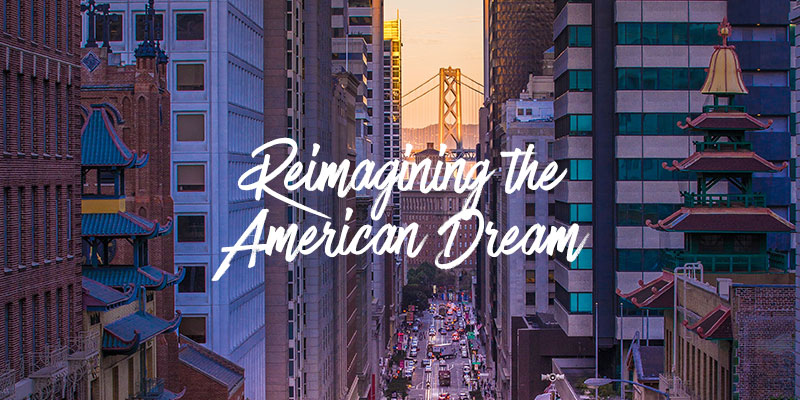
10 Feb Reimagining the American Dream: How Moving to the City Could be Our Smartest Investment
We Live in a Car Culture
In 2001, while my high school years were coming to an end, the movie Fast and the Furious was released. With it came my obsession for the import car culture. Souped up cars with rebuilt engines, body kits, custom rims, car graphics, neon lights and, of course, illegal street racing – I was hooked. I took what I had in my savings and bought a Honda Civic with the sole intent of turning it into my very own Fast and Furious car. I added large 17” rims, a new muffler to make it sound beefier, a cold air intake to add some horsepower, a body kit to make it lower, and neon lights under the dash. I absolutely loved that car.
My Civic and I eventually made the cross country trip to Tempe, Arizona where I would attend school at Arizona State University. After graduating, I bought a 2006 Nissan 350z. It was a red two-seater with six-speed manual transmission. Wow, that puppy moved. Way faster than my Civic ever was, I kept it exactly as I bought it. Gone were the days of the body kit and custom rims; the 350z didn’t need it.
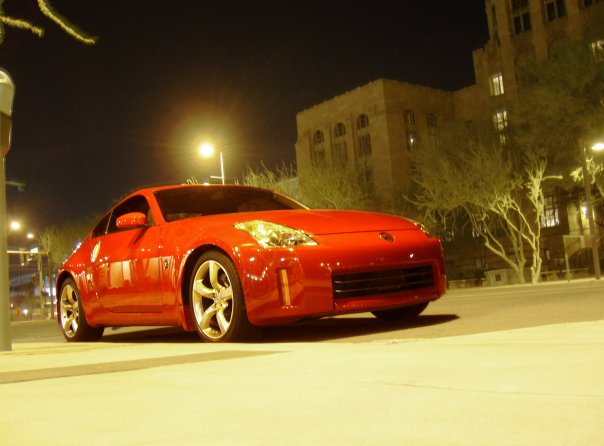
I won’t lie, my 350z was sexy. Nissan effectively seduced me into purchasing a beautiful piece of machinery. And it’s not just the 350z, there are tons of cars out there that are just as and even more beautiful. It seems there’s no shortage of choices for people in today’s car culture.
Further driving our infatuation with cars is the constant barrage of car commercials, billboards, car dealerships, and, of course, other people’s cars. In fact, car companies spend billions of dollars each year on advertising. According to Business Insider, in 2014 Fiat Chrysler spent $2.2 billion on advertising, Ford spent $2.5 billion and General Motors spent $3.1 billion. With these billions of dollars being spent, Americans are being sold four things:
- Cars equal experience
- Cars equal freedom
- Cars equal individuality
- Cars equal success
You see it, I see it, we all see it.
The real question is: do we realize it?
Do we realize that Subaru is selling us experiences? Do we realize that Chevy is selling us freedom? Do we realize that Audi is selling us individuality? Do we realize that Lexus is selling us success? I’m not sure we do.
A New Experience of Moving Around A City
Our lives are punctuated by notable events and moments in time. Some of these events and moments have the power to inflict radical shifts in perspective and, for me, one of those moments came while traveling to San Francisco. This was my first big-city experience and the effect it would have on me was life changing. For the first time, I saw myself living in the city and not the suburbs.
No longer was transportation about getting from here to there. It was the experience of being in the city with other people.
What’s more, my view of cars was forever changed. San Francisco was the first place I had been where I saw people actually getting around via public transportation, walking and biking. Naturally, I joined in, taking BART for my longer trips and walking for the shorter ones. No longer was getting from point A to point B done in isolation, but instead, amongst thousands of others. And to top it all off, public transportation was cheap.
But there was the rub. San Francisco is notorious for being one of the most expensive cities in America to live in, and likely, not the next place I was going to call home – even without a car. Spending those days without a car got me thinking – is it possible to live car-free in Phoenix?
After getting back from San Francisco, I started thinking about the finances of owning a car. Maybe I actually could sell it after all, I figured. I was living in Downtown Phoenix, the light rail was close by, and I just wasn’t using my sexy 350z as much as I used to. I thought about it, thought about it some more, and thought about it for the next three years until I finally took the plunge and sold my car. I found that breaking free of my dependency on a car was as easy as I hoped.
Our Worst Investment
Here’s a question: if you were looking to buy a home, would you still buy that place knowing with 100% certainty that you would lose money?
If you answered no to that question, then you are like every other rational person out there. We buy homes because they are an investment and as time goes on (we hope) they will go up in value. So why do we insist on buying cars when we know that the minute we drive it off the lot, it depreciates in value (19% in the first year)?
Why do we buy cars that drop in value as soon as we own it?
In fact, the financial cost of owning a car is unbelievable. In 2015, a AAA study found that the average annual car cost was $8,698, or $725 per month. For those having two drivers in their household the average car cost doubles to $1,450 per month. Costs such as these are pretty close to, if not more than, a mortgage payment. In Douglass E. Morris’ book It’s a Sprawl World After All: The Human Cost of Unplanned Growth – and Visions of a Better Future, he notes that the average suburban American family could save $560,000 on automobile costs over 30 years.
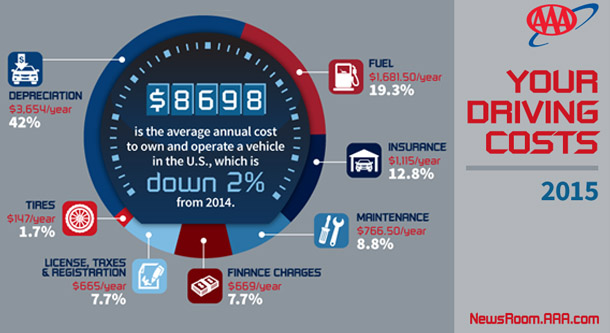 Time is Money
Time is Money
Not only are cars a huge financial cost, they are also a potential time cost. We’ve built America for the car and getting around most everywhere necessitates having a car. The trouble is everyone’s in the same boat, and when everyone’s only choice of mobility is a car you get…you guessed it, traffic. There’s nothing more destructive to that feeling of freedom we get from our cars than being stuck in traffic.
How much time do we lose in traffic? According to a study done by WNYC, here are some revealing statistics showing how much time we lose in our cars based on national averages (keyword – average!):
- The average one-way commute time is 25.4 minutes
- That totals just under one hour per day
- That equals 260 hours per year
- That equals 32 8-hour work days lost
How great would it be to have an extra full month of vacation each year?
The common solution to traffic is the widening of roads and highways. Although this provides temporary relief, this strategy inevitably invites more automobiles and thus creates more traffic – a phenomenon now known as induced demand.
Another one of my life’s punctuations came on a trip to New York City while taking a cab from LaGuardia Airport to the Upper West Side. I’ll never forget watching the meter increase in cost as we sat in traffic. It was the first time I saw a direct correlation between my time spent in a car and money spent.
Imagine if we all had a meter in our own car, ticking away as we drove, and showing us just how much money we lost commuting to work.
What Else Are Cars Costing Us?
Another hidden cost of cars are detrimental effects to our health. In my previous blog, A Healthy Life Begins with a Healthy Environment, I describe a number of adverse health effects and the costs associated with them, including respiratory problems and an increase in obesity.
There’s also enormous medical expenses caused by injuries and deaths from car crashes. In 2008, a AAA report concluded that the United States spends $164.2 billion dollars each year on car crashes. Compare that to the money spent on anti terrorism in 2012: $17.25 billion.
The United States spends $164.2 billion dollars each year on car crashes and has lost almost 2 million people in a 40 year timespan.
Even more disturbing than the actual costs of car crashes is the lives lost to car crashes, which simply cannot be quantified in terms of money. From 1994 to 2012 the annual deaths from car crashes ranged from 32,000 to 43,000 and the total amount of deaths from car crashes occurring between 1970 and 2013 was an unfathomable 1,958,512 people. I cannot think of a worse investment than something that has led to the death of 1,958,512 people in 43 years.
The Ultimate Cost
Our final cost associated with cars may just be the most expensive and detrimental of all – environmental costs. Global warming is triggering events which are causing severe consequences for our earth and for human society. The increase in violent storms, hurricanes, floods, and droughts all caused by a warming planet have cost America billions and are costing the world even more. A 2015 report by the Environmental Protection Agency, called Climate Change Impacts and Risk Analysis (CIRA), found that if we don’t do something to curb the rising temperatures, America could be in for $200 billion in costs by the end of the century.
We cannot wish away the unprecedented amount of carbon being pumped into the atmosphere, nor can we any longer blame it on natural causes. We have to confront the fact that automobiles are “the single greatest contributor to our total carbon footprint.”(Jeff Speck, Walkable Cities) With the rising rates in carbon, the polar ice caps are seeing record melting rates with the potential of putting the world’s major coastal cities under water before we know it. Just look at the damage Hurricane Sandy caused in New York, or Hurricane Katrina in New Orleans. Of the $200 billion in the CIRA report, $64 billion could be saved in drainage systems needed to keep our urban areas from being flooded.
Beyond the human repercussions are those for other species. Our oceans are warming, becoming far more acidic, and plant and animal species are dying – especially our coral reefs, another cost of $1.2 billion. In the rainforest, a 1 degree rise in temperature has the ability to kill entire species.
Development built for cars is the least sustainable development we know and the most selfish.
Finally, development built for cars is the least sustainable development we know, taking up immense acreages of land to support the roads, parking lots and single-story development that accompanies it. The outcome of which is millions of acres of habitat cut down in our selfish interest:
“According to the U.S. Forest Service, approximately 12 million acres of southern forests will be lost to suburbia between 1992 and 2020. Another 19 million acres will be lost by 2040 unless there are changes in the pattern of development that now favors low density housing, strip malls, and exurban road construction.”
Investing in the Future
If all this talk about the financial costs of cars has left you feeling grim, I still aim to instill some hope in you. Rather than dwelling on the money lost on cars, time spent in traffic, injuries incurred from a crash, or the fate of the earth, let’s see just how we can change our circumstances and invest in a positive future.
Place
Many people today are recognizing the value of experience over possessions. We can see the proof of that in the increase of entertainment venues and decrease in retailers. And we can see it in the growing trend to live in places that offer more experiential opportunities. Those places are often cities and other dense areas that afford people the opportunity to walk, bike or take transit to their destinations. Leading the return to areas such as these are Millennials and Baby Boomers who have decided to invest in place.
People are now recognizing the value of experience over possessions, especially in changing trends on where people choose to live.
But what is meant by “place?” In this context, place is being represented as the built environment – one that is unique, diverse and lively. A place that has local businesses, farmer’s markets, entertainment, unique architecture, and numerous transportation options. In Richard Florida’s book The Rise of the Creative Class: and how it’s transforming work, leisure, community & everyday life, he explains how the power of place has completely changed the way in which people choose to live and work. Indeed, the place has become the the most important decision when deciding on where to look for a job.
On the opposite spectrum of this type of “place” is the suburbs, which are comprised of a seemingly endless expanse of cookie cutter homes, strip malls, and parking lots. The suburban environment, although characteristically more affordable than cities, does not afford people the experiential opportunities that are found in genuine places. And for many, those experiences are worth more than the fiscal advantages of the suburbs.
As Charles Montgomery states in his book, Happy City: Transforming Our Lives Through Urban Design; “the greatest of human satisfaction lies in working and playing cooperatively with other people. No matter how much we cherish privacy and solitude, strong, positive relationships are the foundation of happiness. The city is ultimately a shared project, like Aristotle’s polis, a place where we can fashion a common good that we simply cannot build alone.”
Community
Investment in community often comes hand-in-hand with investing in place. There have been an increasing number of studies done on how well designed urban environments help to create strong communities, many of which can be found in Montgomery’s book Happy City. Other studies show the isolating effects of suburban development, such as those found in Morris’ book It’s A Sprawl World After All.
So what is it about cities and other dense areas that foster community? First off, walkable, bikeable and transit oriented areas help promote social interactions. With more chances to meet your neighbors and other community members, people are more apt to form friendships and acquaintances that strengthen the community. When people live in places that have a mix of building types and uses, all functions of life have a chance to come together, creating places that are more lively and fulfilling. These sorts of places provide residents with a strong sense of pride for their neighborhood and the community.
Another common feature of cities are the public squares and parks, places that are teeming with activity – families picnicking, friends convening, teenagers playing sports, and parents walking their children – all of which “facilitates the development of social life and community”. And finally, in cities we often find diverse groups of people with different ethnic backgrounds, socioeconomic backgrounds, and gender identity. What better way to establish an open mind towards others than to grow up amongst people of all backgrounds?
Time
Living in a genuine place with a strong sense of community has been shown to make people happier. That’s a good thing, because at the end of the day, our happiness is one of the most important aspects of life. But investing in place and community are not the only ways to increase our happiness, an investment in time can also help to make us happier.
In Montgomery’s book, Happy City, he notes that a 2008 study found that people who had long commute times were less happy in life. Living within close proximity allows people to take back their time previously stolen by long commutes. That time can be spent with family and friends or it can be spent on personal interests such as activities and hobbies.
Investing in place also often means investing in the value of your time, not wasting it with long commutes.
But it’s not just about shortening your commute to a 10-minute car ride. In a study of British commuters, it was determined that people who took transit, biked or walked to work were reportedly happier than those who commuted by car. Again, this finding is supported by the fact that those other modes of transportation allow people to engage in social interactions, to read a book, catch up on emails, or just check-out – all things that help relieve the stress of work.
Obviously not all jobs are located in the city or dense areas that have transportation options other than automobiles. This fact will certainly prohibit numerous people from making an investment in time. But there are many people who work in the city and commute in from the suburbs, and for those people the opportunity to take back weeks of their lives is entirely possible.
Home
Owning our own home is the American Dream. When that dream is realized, if ever, is different for everyone. But what that home looks like has been, since the 1950’s, nearly the same for everyone – the single-family suburban home. Today that dream is being challenged by the experiences, interactions, community, freedom, mobility, and architecture of the city. As people’s desire to live in the city and other dense urban areas continue to increase so too does the price of homes. We are seeing it here in Phoenix, and it has long been the case for places like New York, San Francisco and Chicago.
In developing cities without robust transportation choices, people must balance rising housing costs with the cost of owning a car. And here’s where proximity is key. The closer people live to work, play and all the services that make daily life possible, the less reliant they are on a car. This is where we can get the most value out of our money. As we saw earlier, cars are a huge investment that always results in a loss of money.
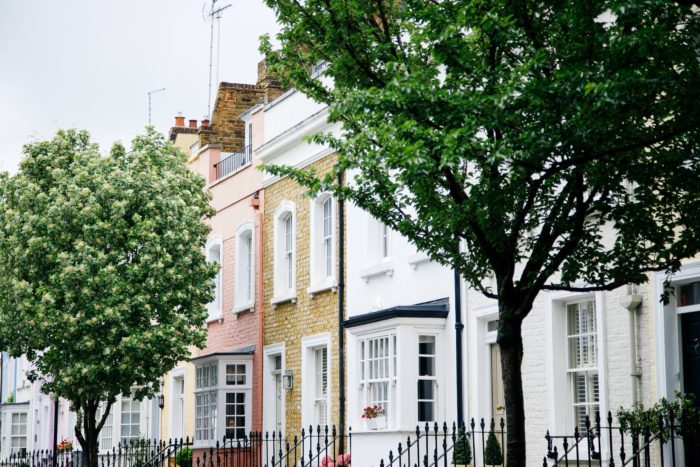
According to a 2012 study by the Atlantic, transportation amounts to 17% of American’s annual expenditures. Taking that 17% of your annual expenditures and putting it towards a home is a much more stable investment. With that average annual car cost of $8,698 now eliminated, you can put a sizable down payment on your house with just a couple years of savings.
In 2016, the average American single-family home cost $240,900. Although the recommended down payment used to be 20%, many Americans are choosing to put down somewhere between 5-20%. With two people saving for a home, each without that annual cost of $8,698, a 20% down payment on the average single-family home would take just under 3 years to save for. Put 10% down and in three years of savings you can afford a condo, townhouse, or house in a city costing $521,880. Those kinds of home costs may seem unreasonable, but they are no more unreasonable than spending $560,000 on automobile costs over 30 years – after all, you should at least make money on your home.
Overcoming Infrastructure
If you feel that my philosophies on automobiles and the built environment are idealist, I will not disagree – they are.
Again, we live in a car culture and the infrastructure that has been built across the United States has been predominantly built for the automobile. This fact will not change overnight with a simple change in ideals. It will take years to build the infrastructure needed to promote the lifestyle I have touted throughout this blog. It will also require huge amounts of rework of our current suburban infrastructure to return that land to the natural habitat that it once was.
We live in a car culture and this fact combined with our infrastructure means we can't change overnight with a simple shift in ideals.
For these changes to occur, there will need to be a number of policies implemented through the government such as; subsidizing urban development (such as programs like Detroit’s Live Downtown) and taxing suburban development, implementing urban growth boundaries, allocating more land to national parks, providing developer incentives for building in the city, and subsidizing infrastructure for transit, biking and walking (instead of subsidizing fossil fuels at an amount of $37.5 billion annually).
So what steps can we take to encourage these changes? Well, just move downtown and ditch your car! I’m kidding.
Although that might work for some people, that kind of leap is rarely realistic. It took me three years to break my dependence from a car, even after moving downtown. The first step to reducing your need for a car will be living in a location with accessibility to transit or other mobility choices. Choose to take public transportation, to walk or to bike whenever possible. If there are two people in your household, it may be feasible to get by with only a single car. Another option for those times when a car is a must have, are car share program like ZipCar, Enterprise car share, Car2Go, Lyft and Uber.
Once you are comfortable with all these other modes of transportation and you’re tired of spending money on a car you don’t use, it may just be time to go car-free (not carefree, which is often how people misread that…although, on second thought, life can be much more carefree without the expense of a car).
To be clear, this way of life sometimes comes with challenges. Here in Phoenix, the heat can be unbearable in the summer. The key to overcoming this – shorter trips and as much shade as possible. With more and more people subscribing to this way of life, though, density will increase and the City will invest in more shade for pedestrians which will help to make those trips shorter and much more bearable.
Finally, converting from a suburban to an urban lifestyle means changing our patterns and expectations. This does not mean that we are losing convenience or living a less privileged life. What it means is that we are taking the opportunity to invest in a better future.




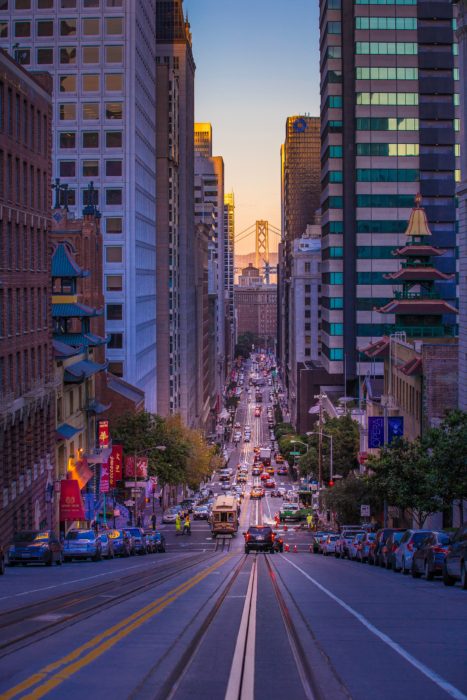
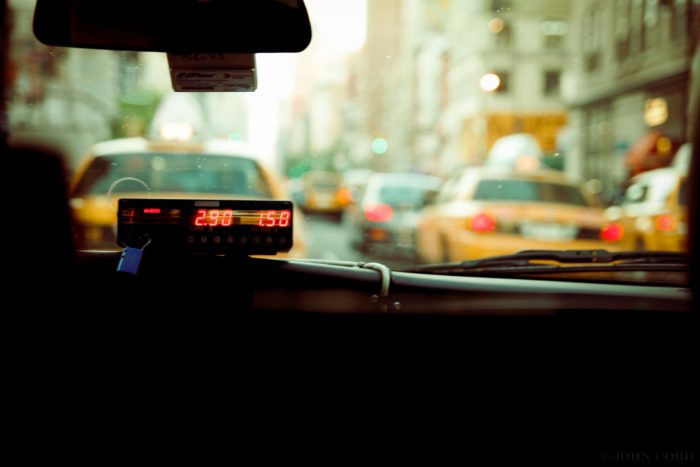


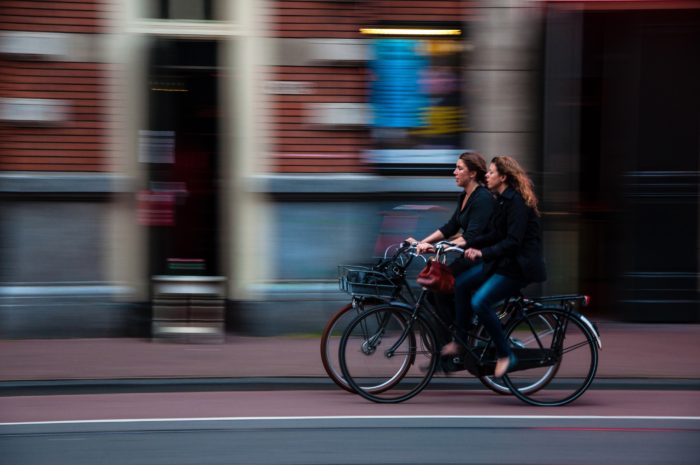
Lorraine Cuprak
Posted at 16:14h, 10 FebruaryRyan, What about when couples have children? Where do they fit in when they get sick, need to go to school etc. All your ideas are great but where do families fit in? Lorraine
Ryan Tempest
Posted at 16:57h, 10 FebruaryLorraine,
Depending on where you live, the feasibility of having children and not having a car will undoubtedly vary. For those who live in well developed cities all over the world, it’s totally possible to raise kids in the city. In other locations it may be that a family has to have one car instead of two, or they may just have to think differently about their expectations. Currently, when we need to get somewhere by car, we have many different options from carshare programs to Lyft and Uber. As life’s circumstances change, we may have to alter our situation and I think that is okay.
Stephen
Posted at 10:03h, 11 FebruaryFantastic article and a lot of great points. I would like to point out the fact that automobile emmissions only account for a very small fraction of the global warming epidemic. I think it’s important to note the fact that cows and methane gas is the largest contributing factor to global warming. Automobile emissions are hardly a factor when considering this. “Cowspiracy” on Netflix details this with an undeniable mathematical formula.
caitlin
Posted at 09:59h, 14 FebruaryGreat insights here!! I’m going on year 4 living car-free in Phoenix 🙂